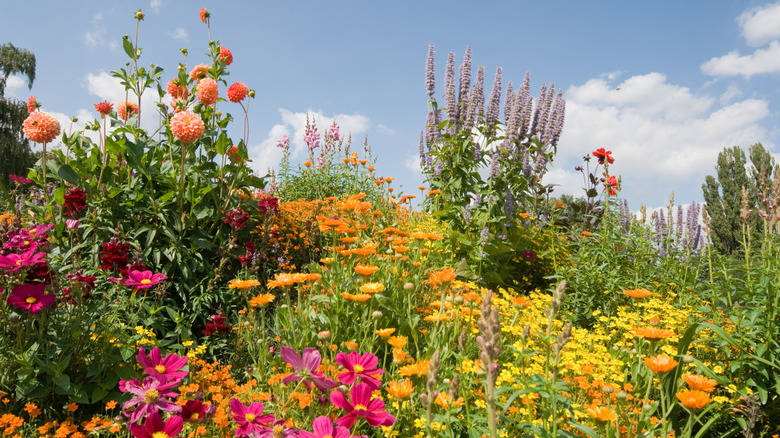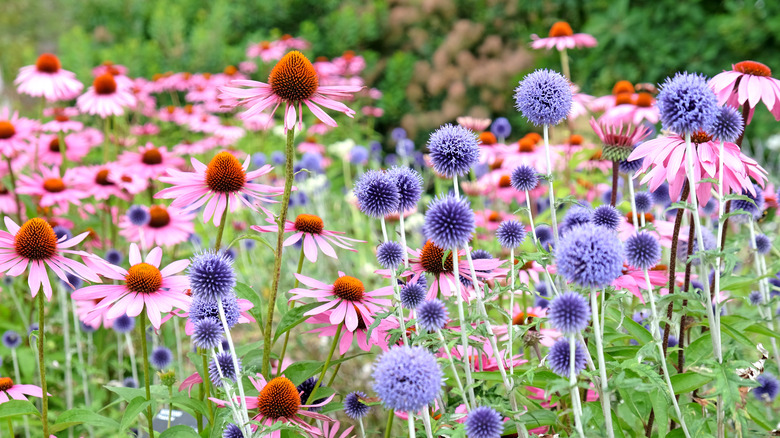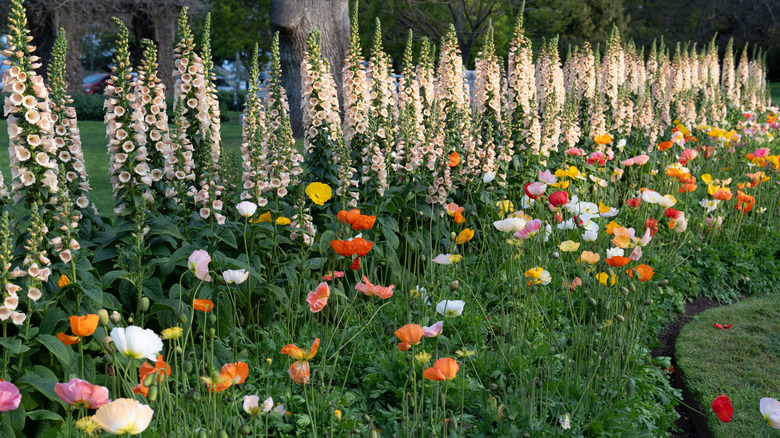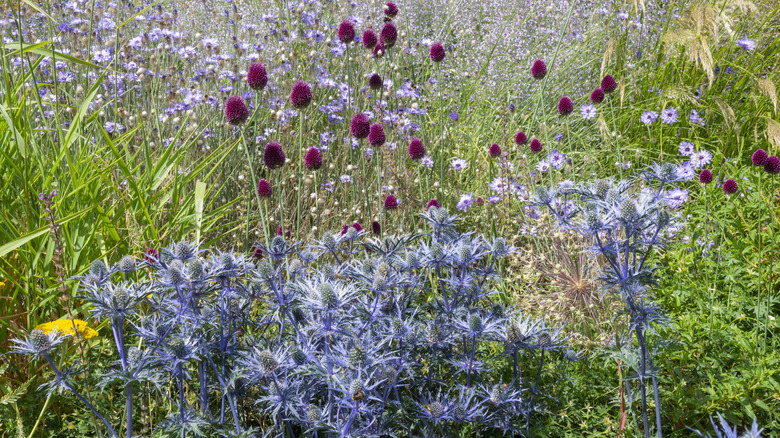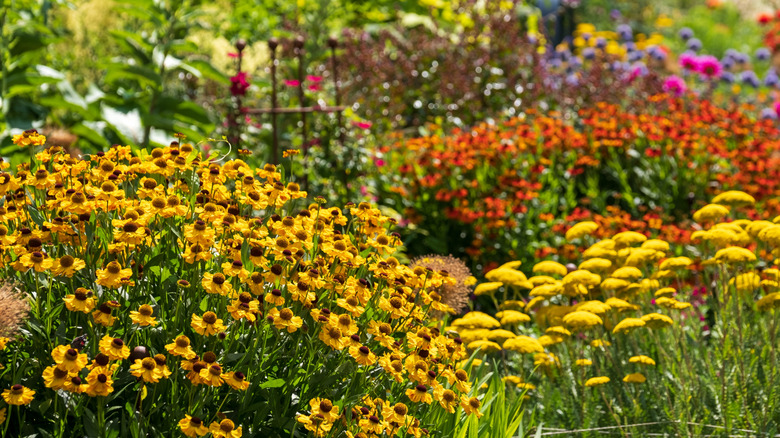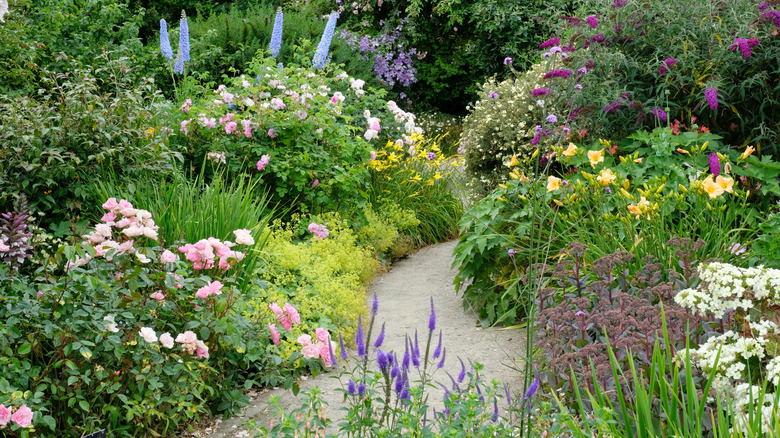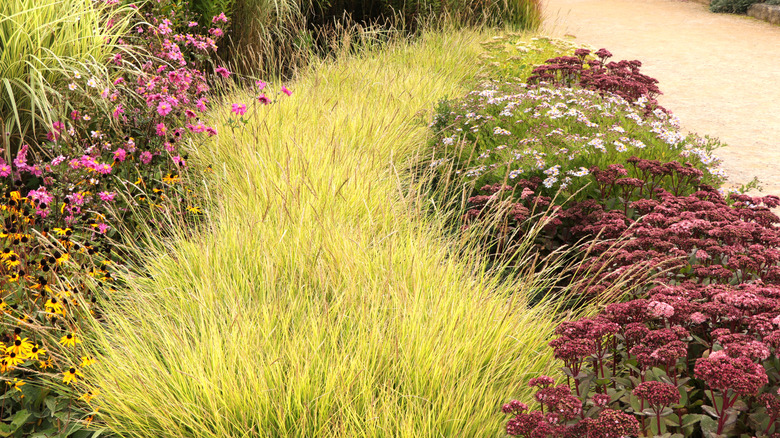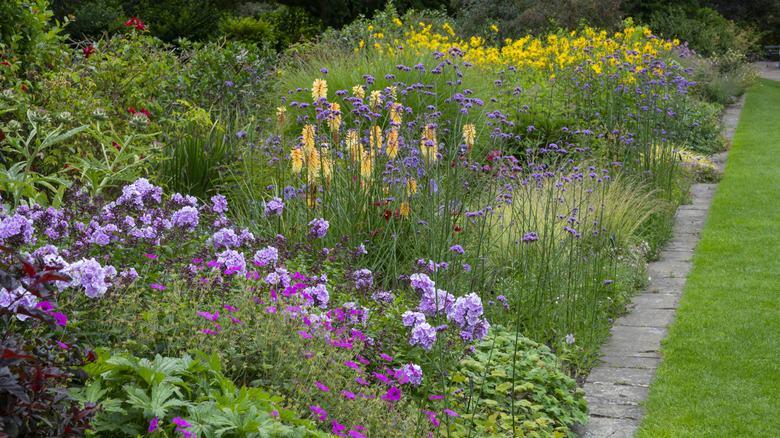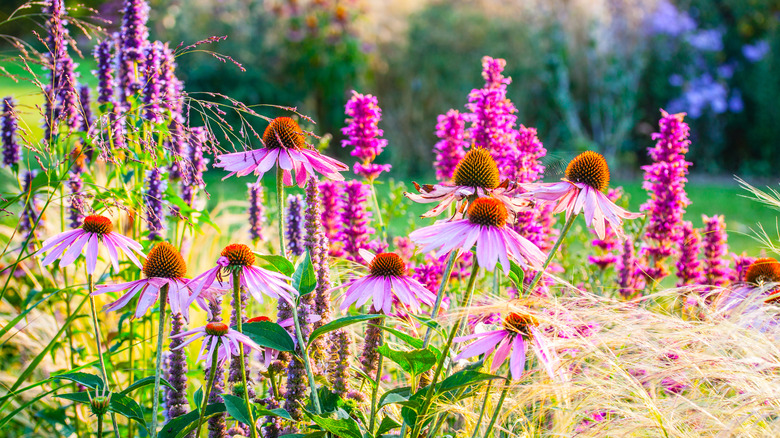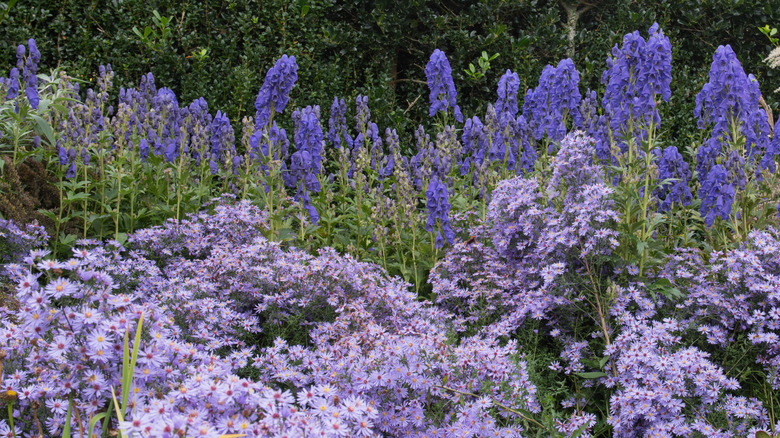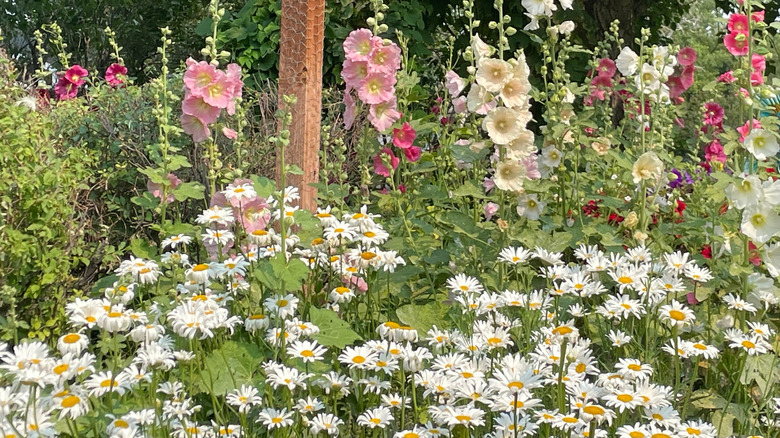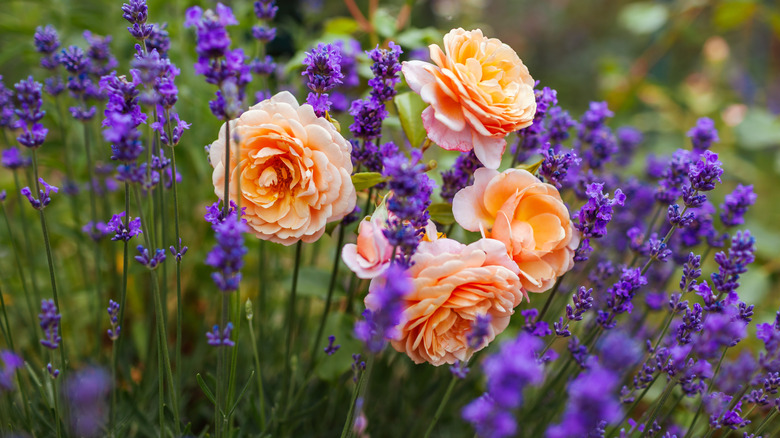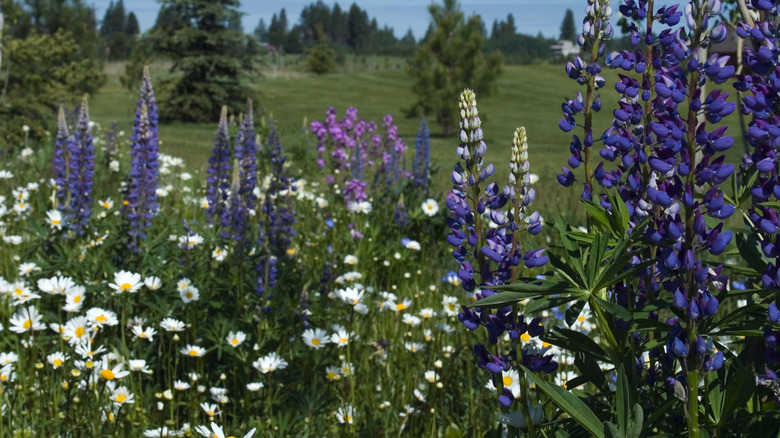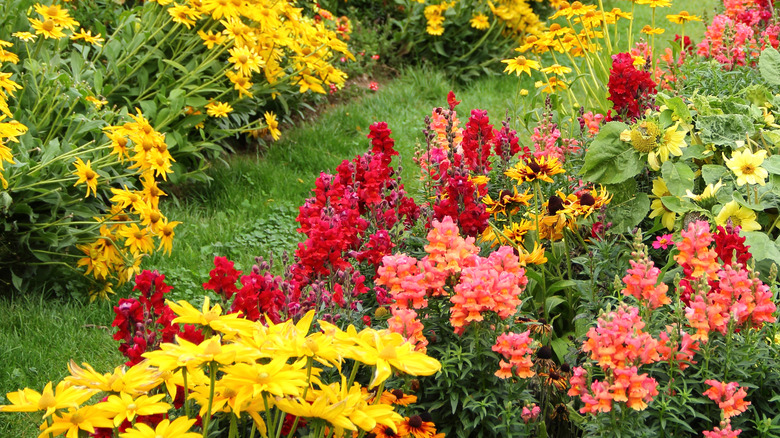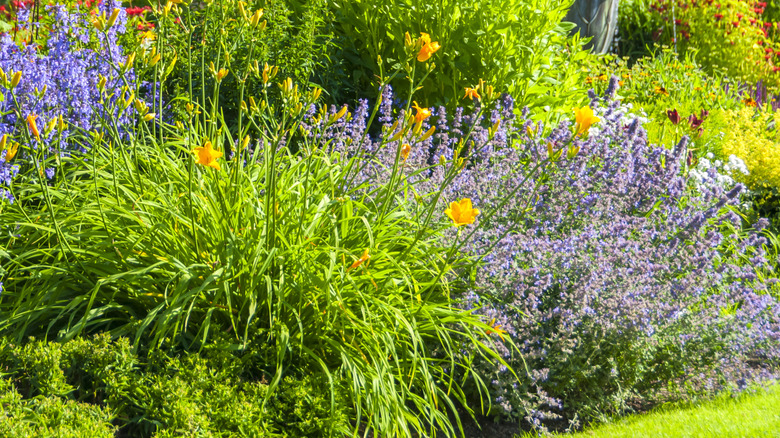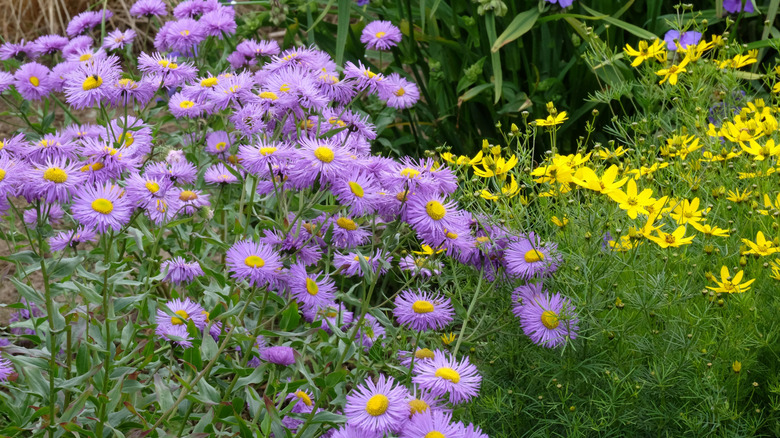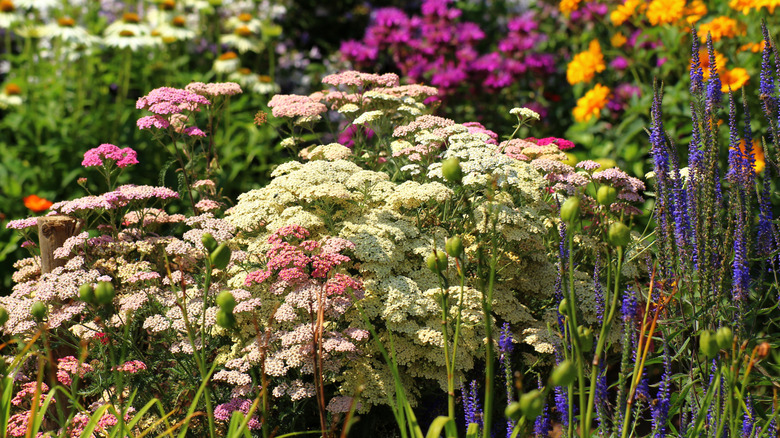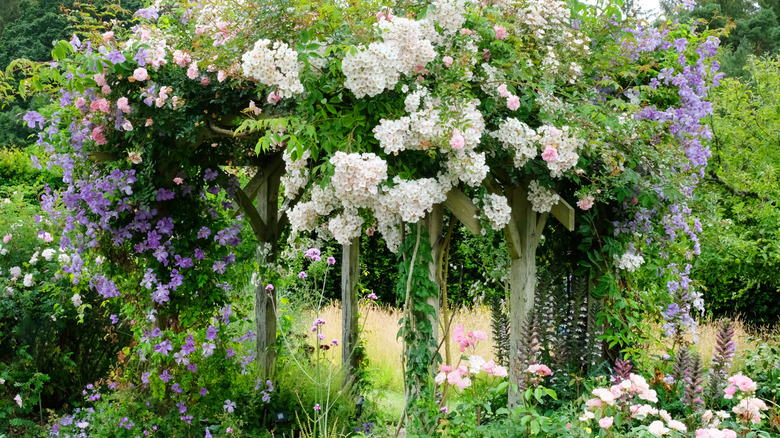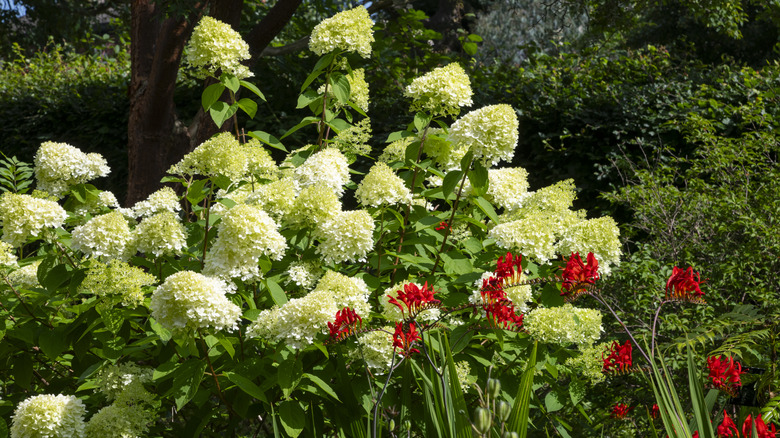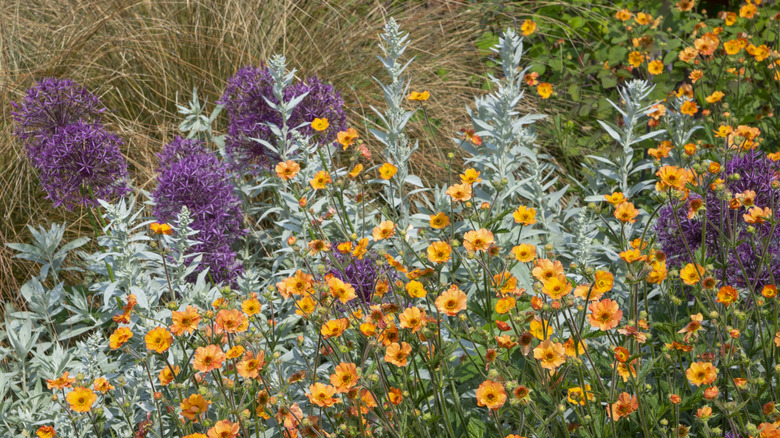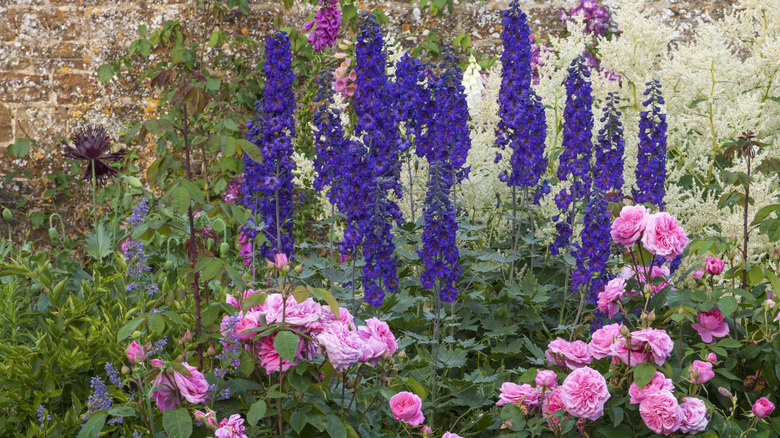Enhance The Look Of Your Summer-Blooming Perennials With These 20 Companion Plants
Summer is the height of the garden season, when most perennials put on their flower show. As a professional gardener, much of my planning and design work includes considering which perennial plants make good companions. This means knowing their sun and soil requirements, how much space they need, and their bloom times, plus the visual aspects of color, texture, and shape. The summer-blooming companion plantings gathered in this list are not only attractive, but suitable for a range of growing conditions.
Though many gardeners augment their perennial plantings in the summer with annuals in beds or containers, planning your perennials for optimum flowering is a tried and true method for optimal summer beauty. Nothing beats a full bed of blooms in the summer sun, full of color, fragrance, and maybe some pollinator action! Most plants can be neighbors as long as their sun and soil conditions are similar, and it helps if they have similar water needs.
Before choosing companion perennials, check out the planting information as well as gardening forums to learn when they flower. Be sure the plants you choose are suitable for your USDA Plant Hardiness Zone (and how to find which one you're in), but it's okay if neighboring plants have different growing zone ranges, as long as their soil and sun needs are similar. For example, a broadleaf hydrangea suitable for USDA Zones 6-9 can happily grow alongside astilbes that are hardy in Zones 4-8, and both plants like partial sun and moist, well-drained, loamy soil. Pairing perennials can be a great way to learn more about garden plants, as well as the unique features of your garden space.
Globe thistle and coneflowers
Globe thistles (Echinops ritro) have delightful flowers: Round, spiky balls in soft periwinkle blue. This plant makes an excellent companion for coneflowers: Both are sun-loving, late summer bloomers, hardy in USDA Zones 3-9, and both are pollinator magnets. I love globe thistle's cool blue tones with classic pink coneflowers (Echinacea purpurea 'Magnus'), but they'd look great with other coneflower colors including orange (try 'Prima Ginger' or 'Tiki Torch'), yellow ('Aloha' or 'Big Kahuna'), or red ('Kismet Red' or 'Sunny Days Ruby').
Foxgloves and poppies
You can't beat tall, stately foxgloves for making a statement in the summer garden! The sturdy plants have colorful flower spikes of white, yellow, pink, orange, or magenta that bloom nicely in full sun or partial shade. Foxgloves are biennial, so plant some two years in a row to ensure they come back consistently. Try pairing them with colorful Iceland poppies, which are easy to grow from seed and share foxgloves' hardiness zone (USDA 4-9). Their delicate round petals are a lovely contrast to the trumpet-shaped foxgloves, and both provide abundant color.
Drumstick alliums and sea holly
Alliums are perennial bulbs in the garlic family, hardy in USDA 3-9. There are many sizes and colors, but for my money you can't beat the inexpensive "drumstick" alliums: Cute egg-shaped spheres of maroon purple. The rich color looks great with many summer perennials, but combined with silvery-blue sea holly (also hardy in USDA 3-9), the contrast of texture and color is striking and magical. You can try larger globe alliums in purple, white, or pink also. Plant the allium bulbs behind the sea holly, so you can see all its gorgeous intricate shapes.
Yarrow and helenium
Sun-loving perennials hold their color nicely all season long, and two of my favorites for sunny flower beds are yarrow and helenium. Their growing zones are compatible, too (yarrow is USDA 3-9, helenium is USDA 4-9), and both are sturdy plants that can be easily divided every 2-3 years. Helenium's colors are sunny and warm: Yellow, orange, red, and rose pink. Yarrow offers similar colors, along with white and some lovely pastels. As a bonus, both are loved by pollinators, and yarrow helps deter veggie garden pests by attracting beneficial insects.
Butterfly bush and day lilies
Butterfly bush (Buddleia davidii) is a long-blooming perennial pollinator magnet, hardy in USDA Zones 5-10, with large fluffy flower plumes. It can grow quite tall: I cut mine back to the ground every fall to manage its size, and there are also newer, compact cultivars. Its mid-to late summer blooms pair well with day lilies (hardy in USDA 3-9). Both plants offer a rainbow of colors. I love a pink (like lovely 'Princess Pink') or magenta (try bold 'Miss Molly') butterfly bush paired with yellow day lilies for a stunning, bright combo.
Sedums and smaller ornamental grasses
Some ornamental grasses are huge and offer lots of advantages in your yard or garden, but smaller varieties look terrific in sunny beds. Slender grasses are a vibrant backdrop to tall sedums (hardy in USDA 3-11), with both lending color all summer into fall. For dramatic texture contrast, pair hot pink sedum 'Neon' or deep purple 'Thunderhead' with lemony-chartreuse Autumn Moor Grass (Sesleria autumnalis), which grows 8-24 inches tall, and is hardy in USDA 5-9. Or try 'Boulder Blue' fescue grass (12 inches tall, USDA 4-8) with a 'Frosted Fire' sedum, with blue-green leaves edged in creamy white and rosy red flowers.
Torch lily and verbena
Torch lily (Kniphofia) is a striking summer blooming perennial with bushy flower spikes in shades of red, yellow, and orange. They're often called "red hot poker" after the widely-grown red and orange variety. The yellow ones (try 'Glowstick' or 'Bee's Lemon') look enchanting in a sunny meadow garden with airy, small lavender verbena (also called purpletop or vervain). They both are somewhat cold hardy: Torch lily thrives in USDA Zones 6-9, verbena in 7-9, or it can be grown from seed as an annual.
Hyssop and coneflower
Hyssop, also known as hummingbird mint (Agastache), is a fragrant perennial with tall, fuzzy flower spikes beloved by pollinators. It makes a great neighbor for coneflowers: Both are long-blooming sun-lovers with a glorious range of colors. They also have adjacent growing zones: Coneflowers thrive in USDA 3-9, hyssop in USDA 5-10. Try these attractive pairings: Pale apricot 'Poquito orange' hyssop with fuchsia pink 'Fatal Attraction' coneflowers, rosy red 'Morello' hyssop with golden 'Mellow Yellow' coneflowers, or lavender-blue 'Blue Fortune' hyssop with vermilion orange 'Moab Sunset' coneflowers.
Monkshood and asters
Once the summer starts to wind down, gardeners rely on late-blooming perennials to keep things vibrant. Asters and monkshood (Aconitum) make a fabulous pairing in the garden, as both start to flower in late August. Monkshood (hardy in USDA 4-9) produces tall stems (3-4 feet) with hooded flowers of deep violet blue, while asters (hardy in USDA 3-8) produce clouds of delicate blooms in cool hues (white, pink, purple, blue). Though monkshood prefers partial shade and asters like full sun, as you can see, they happily abide in a partial sun situation.
Hollyhocks and daisies
Hollyhocks add romantic cottage charm to the garden. Pair them with daisies for an old-fashioned look conjuring a country meadow. Tall, sturdy hollyhocks are biennial and hardy in USDA zones 3-9. Many gardeners plant them near fences or walls, but they'll grow almost anywhere as long as they get plentiful sun. There are many kinds of daisies: oxeye daisies (Chrysanthemum leucanthemum) are hardy in USDA 3-9, and 'Daisy May' Shasta daisies (Leucanthemum x superbum) thrive in USDA 5-9. Both have a classic wildflower look and start blooming in early summer, perfect companions for midsummer-blooming hollyhocks.
Fragrant roses and lavender
Planting fragrant roses with lavender will turn your garden into a perfumed paradise loved by pollinators. Lavender's herby scent also deters mosquitos. Most lavenders are cold hardy in USDA Zones 5-9, but Spanish lavender is best in USDA 7-9. Roses are generally cold hardy in USDA 5-9, so they're a good mate for sun-loving lavender, and both need well-drained soil. Lavender's usual color range is pale to deep purple, making for beautiful contrast with warmer colors. Try it with an orange rose like hybrid tea 'Fragrant Cloud' or heirloom 'Belle Epoque.'
Lupines and daisies
Lupines are glorious in the garden, with their columnar towers of bold color and attractive sunburst-shaped leaves. Pair them with humble, cheery oxeye daisies, for excellent contrast of color, size, and texture. Both love a full sun or mostly sunny environment, and have very adjacent cold hardiness (lupines love USDA 4-8, daisies prefer USDA 5-9). They both bloom from late spring to midsummer, and attract plenty of pollinators. My favorite lupines are the 'Russell' cultivars for their statuesque height (3-5 feet tall) and many vivid colors, especially the glorious range of violet blues.
Snapdragons and rudbeckia
Rudbeckia — black-eyed Susans being their most common variety — are sturdy, sun-loving perennials loved by pollinators. The large, daisy-shaped blooms make attractive companions for snapdragons. There's some disagreement about whether snapdragons are annual or perennial as most are cold hardy in USDA Zones 7-11, but I find the tall 'Rocket' variety reseeds in sunny spots to give me new flowers each spring. I love 'Rocket Bronze' with its mix of orange, pink, and yellow tones, alongside golden yellow 'Prairie Sun' rudbeckia (cold hardy in Zones 3-8); both bloom for weeks in late summer.
Reblooming daylilies and flowering catmint
If you have sunny space for large perennials, you can't beat daylilies (Hemerocallis) and flowering catmint (Nepeta). Both are hardy in USDA Zones 3-9, and attract numerous pollinators: They are a flower hummingbirds absolutely love. These densely-rooted yet easily-divided clumping plants help deter weeds. Try long-blooming violet blue catmint next to re-blooming daylily cultivars in yellow ('Stella d'Oro' or 'Happy Returns'), orange '(Lady Lucille' or 'Earlybird Oriole'), and/or pink (sweet pastel 'On and On' or striking pink and red bi-color 'Strawberry Candy') for pleasing, summer-long color combos.
Coreopsis and asters
Threadleaf coreopsis is a hardy perennial with delicate foliage and cheery flowers that bloom for weeks in summer. Deadhead the spent flowers by shearing the plant back gently, and you'll get more blooms in fall, just in time for colorful asters. Both plants love sun and are hardy in USDA Zones 3-9. Yellow coreopsis (like 'Zagreb' or 'Moonbeam') next to asters with bright yellow centers make a dramatic combo. Lavender asters like 'October Skies' are a stunning complement to yellow, but light pink ('Wood's Pink'), hot pink ('Alma Potschke') or carmine red ('Crimson Brocade') also look beautiful.
Yarrow and veronica
Yarrow (Achillea) is a cottage garden favorite for its long lasting blooms in many colors, including white, yellow, peach, pink, and magenta. The ferny foliage adds a delicate texture and pairs well with veronica. Also called speedwell, this perennial shares yarrow's cold hardy nature (both are suitable for USDA Zones 3-9). Veronica's slender, colorful flower spikes lend a dramatic contrast to yarrow's round, flat flower heads. As long as they get plenty of sun, neither plant is fussy about soil. As your yarrow and veronica flowers fade, snip them off to encourage new blooms.
Climbing roses and clematis
What's more romantic than an arbor covered with climbing roses in bloom? Add a clematis vine for a dynamic pairing that blooms for weeks. Both plants are generally hardy in USDA Zones 4-9, depending on variety. Purple clematis and pink roses are a classic combination, but I encourage exploration! Try a white 'Iceberg' climbing rose with bright bi-color clematis like 'Nelly Moser' or 'Sweet Summer Love, or pale yellow heirloom 'Lady Banks' roses with magenta 'Bourbon' clematis. If you don't have an arbor, plant more compact clematis vines with rose bush pairings for a beautiful floral combination.
Hydrangeas and crocosmia
I'm not always a fan of bright red flowers in the garden (I prefer pink or burgundy), but I make an exception for 'Lucifer' crocosmia. This airy curving long-stemmed flower, also called "falling star," glows with color in mid- to late summer. These easy-to-grow bulbs come in a number of boldly colored varieties like red, orange, and yellow. All are hardy in USDA Zones 6-10, though 'Lucifer' crocosmia is cold hardy to Zone 4. This makes it a good companion to the 'Limelight' panicle hydrangea (USDA 3-9), with the crocosmia's red colors popping beside the pale green flowers.
Geum and alliums
Geum is a sprightly perennial with frilly daisy-like flowers in shades of orange, yellow, and pink. Depending on the variety, it is hardy within Zones 3-9. The clumping foliage has round, serrated leaves and stays fresh all season after the flowers fade. These dainty blooms are a good counterpart to large airy alliums (also hardy in USDA 3-9) in shades of dark purple. Both plants enjoy copious sunshine and a well-drained soil, so they make good roommates. This photo also shows some attractive silvery artemisia as another striking color layer to accent these attractive summer flowers.
Delphiniums and heirloom roses
Delphiniums lend dramatic shape and color to the summer garden. Their slender form looks great alongside bushy plants with rounded blooms, like a many-petaled heirloom rose. Both plants love well-drained loamy soil and full sun: Delphiniums are hardy in Zones 3-7, while heirloom roses thrive in USDA 5-10. The color possibilities are enticing: Cool-toned delphiniums include white, pinks, blues, and lilacs. Try deep-blue delphiniums with pink roses, pale blue delphiniums with orange roses (like golden orange 'Lady of Shalott' or pale apricot 'Wollerton Old Hall'), or lavender delphiniums with deep-red roses (like 'Braveheart' or 'Blaze').
